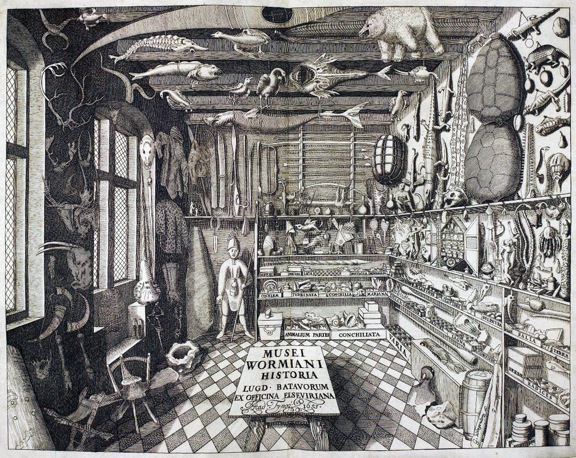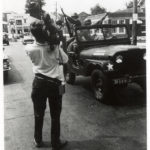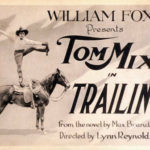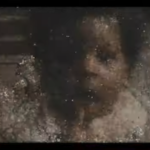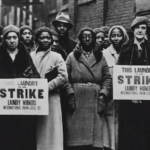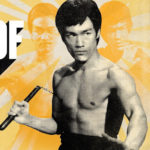A Cinematic Cabinet of Curiosities
12th Annual Northeast Historic Film Summer Symposium
Das Wunderkino: A Cinematic Cabinet of Curiosities
Bucksport, Maine, July 28-30 2011
The Wunderkammer – the “wonder-room” or “miracle chamber” – was among the first forms of things collected in a box to be gazed at. Movies clearly inherited some of their forms and functions – the latter have included slaking curiosity, often indulging voyeurism.
The history of curiosity boxes throws light on what amateur filmmakers are up to when they have committed their lives, and those of their loved ones and friends, to film. Mind, the home movie seems rather more innocent than the wonder-room of earlier times was, according to historians and cultural theorists.
The Wunderkammer (such as the one above, from the Museum Wormianum, Leiden, 1655) took its commonly understood form – a cabinet of curious natural objects and odd artifacts – in the late 16th century, in Germany and elsewhere. But historians relate that precursors emerged earlier. In the 14th century, for example, the Habsburgs, Austria-Hungary’s royal family, made imperial collections that demonstrated their princely magnificence. The Habsburgs decked their proto-Wunderkammern – with amber, seashells, jewels, musical instruments, birds, and even freaks of nature that demonstrated God’s power to tinker with Creation.
They, and the later, more domestic variants that followed them, were precursors of the modern museum – the Kunstkammer of German, the Kunstkamera of Russia, and so forth. At a time when democracies were few, and wealth and power resided under monarch’s scepters and in dukes’ dukes, such collections strongly projected the personality of their collectors. In the 15th century, Italian humanists, citing classical precedents, had noted this tendency: The refined ruler, they said, collected rare and elegant possessions to signify magnificence that was not just princely but also personal.
That was certainly the case when the fashion arrived in England in the 16th and 17th centuries. There, the gentry collected statues and friezes as well as knickknacks to reveal that they had presumed to plunder their empires, but also to project new ideas of the self. The famous art collections of England’s King Charles I, in the 17th century, for example, “embodied a kind of knowledge that transformed them into high culture,” wrote Marjorie Swann, a literary historian at the University of Kansas, in her book, Curiosities and Texts: The Culture of Collecting in Early Modern England (University of Pennsylvania Press, 2001). The Wunderkammer craze had always been a social process, and its imperial function exemplified 20th-century cultural theorist Pierre Bourdieu’s conception of taste as a “technology of domination” serving to establish social hierarchies.
But collecting was also often considered “rather unsavory, because you were taking things that were in the public realm and secreting them for your own purposes,” and those included indulging a fixation on the forbidden, the occult, and the sexual, Barbara M. Benedict, a literature authority at Trinity College (Hartford, Conn.) wrote in Curiosity: A Cultural History of Early Modern Inquiry (University of Chicago Press, 2001).
Literary versions of the “curiosity cabinet,” popular from the 1780s into the Victorian period, contained “low-rent collections of titillating stories,” as she put it. The book titled The Wonderful Museum, for example, contained pornographic tales, romans à clef, and scandalous memoirs, along with anecdotes and tales of the great and illustrations of “distorted and weird creatures, vegetables that looked like people, transsexuals, men with horns, things that were aberrations of nature.” That kind of collecting was clearly unseemly, but still in some senses a “mimicked experience of power,” Benedict argued.
Being a potentate has always insured a measure of indulgence of the kinky, but tolerance came less readily to the middle and laboring classes of the Victorian era. When they took up collecting and constructed their more modest cabinets of curiosities, they lacked the means to create whole rooms of wonder, so settled for small chests of, say, seashells and rocks from a seaside holiday. “Collecting became a sign of memorializing your past” – innocent enough, Benedict wrote. But among the upper classes, the practice took on “erotic and, some people think, pornographic undertones” because setting a portrait of a human among feathers or some other odds and ends could seem “an attempt to own other people in a prurient kind of way.” (Still far off was the Facebook’s invitation to browse and gaze for all you’re worth.)
Victorian tutting was not just a matter of prudery oozing out all over; Walter M. Kendrick wrote in a 1987 study of Victorian pornography, Secret Museum: Pornography in Modern Culture (Viking), that collecting was first eroticized upon
THE CURIOUS WORLD OF DIE WUNDERKAMMER (the “wonder-room” or “miracle chamber”) as Germans termed a collection of objects, specimens, and artifacts that was a precursor of the modern museum, inspires this summer’s Northeast Historic Film’s symposium.
As participants will discuss during the symposium, which runs from Thursday, July 28 2011 through Saturday, July 30 2011, the creation in Europe of such “cabinets of curiosities” in early modern times would resonate centuries later in film and other technological forms that facilitated, glorified, and naturalized gawking.
During the summer symposium, titled Das Wunderkino, archivists, scholars, and filmmakers will suggest how amateur and nontheatrical moving images have done that.
Visitors are welcomed, but are asked to register for the symposium.
A registration form, as well as information on the symposium sessions, local lodging, and transportation, is on the Northeast Historic Film website.
The event collects and displays a selection of cinematic curiosities – amateur films of family vacations, birthday parties, and other events – of a kind that have increasingly interested scholars, archivists, filmmakers, and documentarians in recent years.
Why? Because, as symposium organizers note, amateur film is worth considering in a variety of its dimensions: how amateur and non-commercial films satisfy curiosity and provoke wonder, and how it serves to broaden the scope of cinema studies, which can always use a reminder about non-conventional and non-commercial films’ often-uncanny contributions to film art and craft.
Here is the program; fuller descriptions are on the NHF website.
A Modern Cabinet of Curiosity: The George Kleine Educational Film Catalogue, Oliver Gaycken, University of Maryland
A collection of “educational motion picture films” that George Kleine made in 1910 “demonstrates a peculiarity whose origin can be traced back to an ambivalence at the root of the concept of curiosity itself,” Gaycken writes in his description of his presentation. Kleine intended to provide education efficiently through a visual medium; but, Gaycken asks, did he also indulge “gawking wonder…an arousal of the passions that leads away from enlightenment and toward the freak show?”
Of Cabinets and Prurient Curiosities: The Evolution of the Pornographic Peep Show Booth, Amy Herzog, Queens College-City University of New York
Films have been shown in single-viewer machines throughout their history, particularly to exhibit pornography. Herzog says she will frame the peepshow apparatus as a literal cabinet of curiosity, and examine the curious content of the film loops themselves.
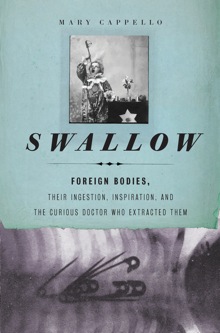 Swallowed and Saved, Mary Cappello, University of Rhode Island
Swallowed and Saved, Mary Cappello, University of Rhode Island
In Philadelphia’s Mutter Museum, the Chevalier Jackson Foreign Body Collection consists of drawers filled with thousands of items that had been swallowed or inhaled, then extracted nonsurgically by a pioneering laryngologist using rigid instruments of his own design. Among the material that Mary Cappello, author of Swallow (The New Press, 2011) will present is recently re-discovered home movie footage of Jackson.
Suitcase of Love and Shame, Jane Gillooly, film/video maker, School of the Museum of Fine Arts, Boston
Gillooly presents a suitcase, purchased on eBay, that contained 50 hours of reel-to-reel audiotape, and still photographs, chronicling the details of an adulterous love affair, and foregrounding their interest in documenting their love with the technology of the time.
1966 Fluxfilm: Disappearing Music for Face, Lauren Brenner, University of California, Irvine
Brenner considers Mieko Shiomi’s 11-minute film of Yoko Ono musically cued transition from smiling to not smiling. The work, Brenner says, “pushes the boundaries of human interpretive frameworks.”
Amateur Made Trick Films – Rediscovering the Litanical presence of Melies style magic across formats, countries, and eras, Dino Everett, Hugh M. Hefner Moving Image Archive, Los Angeles
The playfulness of amateur moviemaking often resembles the early work of French filmmaker George Meliès, says Everett. Learning the craft of filming, he says, seems to encourage beginners to engage in simple scenes of motion trickery. He asks: What to make of that, and how does it relate to Meliès’s “bag of tricks.”
Nothing up His Sleeve: Filmmaker, Magician, and Tailor Ramon Galindo, Snowden Becker, University of Texas, Austin
A presentation from the online collection of the Texas Archive of the Moving Image of films created by tailor, magician, and amateur filmmaker Ramon Galindo. Becker says one short film by Galindo combines his three passions: “a virtuosic multiple-exposure split screen, complete with magical special-effects flourishes, demonstrates how to tailor a suit jacket for a hunchback. The film is painstakingly composed to illustrate each step of the process, displaying the tailor’s craft, the magician’s showmanship, and the filmmaker’s mastery of technique. The film serves as a reminder that the tailor’s fitting room is itself a cabinet of curiosities.”
Lenticular Spectacles: Kodacolor’s Fit in the Amateur Arsenal, Marsha & Devin Orgeron, North Carolina State University, Raleigh
A family’s foray into Kodacolor home moviemaking in the late 1920s and early 1930s, during a family road trip. The presentation considers how and why the color technology was used, and its technical history.
The Internal Archive: Reimagining the Amateur, Melinda Barlow, Film Studies Program, University of Colorado, Boulder
Barlow considers the work of three women – an experimental filmmaker, a photographer, and a film historian/art collector – who have used home movies, vernacular photographs, and found objects that “serve as mirrors, talismans, reminders, and warnings,” she says.
Brisbane Youth Films, Debra Beattie, Griffith University, Queensland
“Brisbane in the early 1980s was a metropolis governed by a State leader galvanized against modernity, which he saw as a source of moral decay,” says Beattie. She presents fragments of film that document resistance through music making, theatre, the visual arts, and filmmaking.
Is This Film Dangerous? The Lasting Effects of Racism as Depicted in a Southern Home Movie, Margie Compton, University of Georgia Libraries
In a collection of 38 family home movies (1930s-1960s) given in 2009 to the University of Georgia Libraries’ Media Archives, was given 38 home movies [1930s-1960s], “one reel stood out for its visual representation of racism, something we had never seen in a home movie,” writes Compton. She discusses the implications of the donation.
My Apology: A Film Collector’s Defense of Prurience as an Archival Virtue, Albert Steg, film collector, Boston
“I will offer the perspective of an independent film collector with archival proclivities, who views “prurient interest” as a positive marker of archival value,” says Steg.
A Minister’s Compilation Film Curio, Pam Wintle, Smithsonian Institution, Washington DC
Japanese segments from a 17-minute compilation film from an American Methodist minister’s travel-film collection prompts Wintle to address the many questions that the segments beg. “This compilation engages us in the mystery of the amateur filmmaker’s curiosity and the desire to record it,” she says.
the excavation of Pompeii in the mid-18th century. The dig revealed that erotic cults had operated in the ancient city; titillated Victorian men of the British ruling class furtively hoarded Pompeian sculptures and other depictions of raunchy activity, in effect setting the ball rolling on the modern conception of pornography.
Desire was not the only motivator; European collecting in the 18th and 19th centuries was also a product of the scientific embrace of empiricism, according to Benedict. “It was taking over every other philosophy, particularly religion, as a way to determine truth,” she says. And looking at things was then the empirical test par excellence.
To shape the way things were looked at, so that it would take approved forms and produce approved outlooks, historical societies and government officials took to housing in museums the artifacts that private collectors had gathered; in effect, they institutionalized the past.
Despite the imposition of approved frameworks around collections, collecting became so democratized from Victorian times, on, that historians today have no shortage of data to consider when asking what collections reveal about creators’ sense of self, their social or commercial intentions, and the tenor of their times.
In the 1980s, researchers began to ask why, then, had studies of collecting boringly concentrated narrowly on historical issues such as what collections contained and when they had been made. Instead, they noted that, given how pervasive the phenomenon of collecting had become, ir must surely be worth inquiring about the processes of collecting, and rationales for it. Recent studies have taken such tacks.
They have clear implications for film, particularly for collections of amateur films of family vacations, birthday parties, and other events.
Like any collections, those may provide insights into personal and cultural motivations, historical trends, and the like. They also may warrant psychological study, as other kinds of collections during Victorian times, at the birth of moving images, did. Freud considered collecting a compensation for loss, and demonstrated as much by gathering antiquities after his father died.
The psychoanalytic gaze on collecting persists. In a 1994 book, Werner Muensterberger, a New York analyst, framed collecting as “an experiment in self-healing” in which hunting for things, spending time in their company, and savoring their aesthetic pleasure combats a “tension between id and ego” rooted in childhood trauma.
How might this apply to collectors of toilet paper, airsickness bags, or endless hours of one’s baby gurgling? Good question.
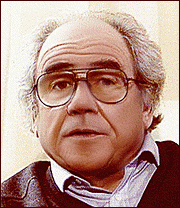
That image of collectors matches the popular notion of them as obsessive fetishists, but Susan M. Pearce, a museum historian at the University of Leicester, who was among pioneers of asking new questions about collecting in the 1980s, has found strong evidence to the contrary. Her studies have revealed, for example, that the one-third of British citizens who are collectors are as likely to be married, parents, in a stable home, and as sociable as anyone else. “But they make their relationships at least in part through objects, which is interesting,” she says. “I don’t sense any pathology.”
Unless, perhaps, even normalcy is pathological, and collecting demonstrates as much.
It does have gender tendencies, Pearce found. While men and women collect in equal numbers, they tend to collect differently: “Men collect, basically, things with wheels, unsurprisingly – it’ll be mechanical things or sporting gear. Women collect household goods, jars of Tupperware, tea towels, that kind of thing.”
Researchers in gay-and-lesbian studies, too, are revising old conceptions of collecting, presenting it not as pathological or geared toward easing childhood hurt, but as “a socially creative and recuperative act.”
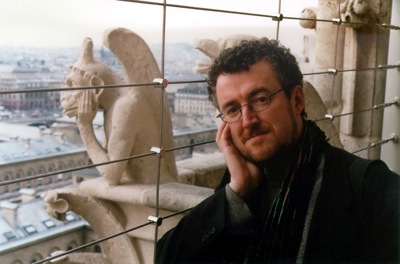
Scholars have tended to sneer at “obsessive” collectors – the nut jobs who troll Web sites and travel 900 miles to a Poison concert thirsting for a shard from a broken drumstick. But Camille thought celebration more appropriate. “Pleasure – not as a passive and merely optical response but as an active, productive, and shaping stimulation of all the senses – is the fundamental experience” of collecting, he wrote. Given its proper, sensual expression, “it is productive pleasure felt in the body that binds the connoisseur to the gesture of the brushstroke and the philatelist to the sensation of the serrated edge.”
What film buff would disagree?
– Peter Monaghan
Previous Post: National Film Preservation Foundation & NEH Grants
Next Post: The Wonder-Room of Cinema

